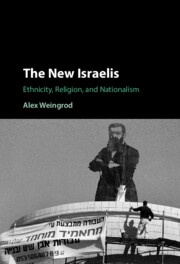Book contents
Bibliography
Published online by Cambridge University Press: 18 January 2025
- Type
- Chapter
- Information
- The New IsraelisEthnicity, Religion, and Nationalism, pp. 300 - 320Publisher: Cambridge University PressPrint publication year: 2025

